“The life of the dead is placed in the memory of the living.” Marcus Tullius Cicero

This week the town was awash in Orange Marigolds……….leading to Día de los Muertos Celebrations … a bit of background history …
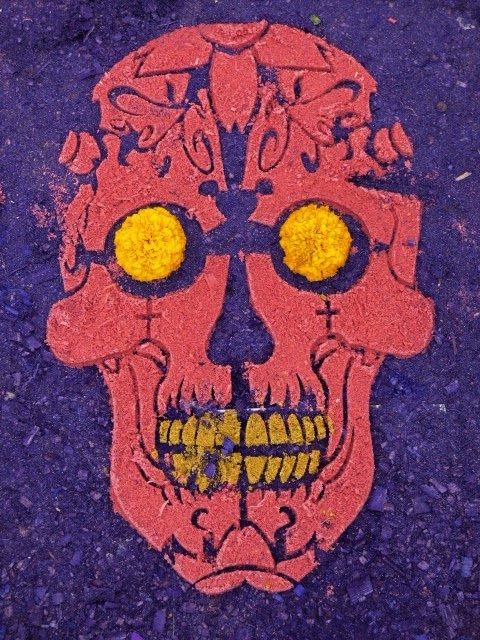
The Day of the Dead celebrations in Mexico developed from ancient traditions among its pre-Columbian cultures. Rituals celebrating the deaths of ancestors had been observed by these civilizations for over 3,000 years. The festivities were dedicated to the goddess known as the “Lady of the Dead (Mictecacihuatl)” corresponding to the modern La Calavera Catrina.
La Calavera Catrina was created as a zinc etching (1910 – 1913) by the Mexican printmaker, cartoon illustrator, and lithographer José Guadalupe Posada. She is offered as a satirical portrait of those Mexican natives who, Posada felt, were aspiring to adopt European aristocratic traditions in the pre-revolution era. La Catrina has become an icon of the Mexican Día de Muertos or Day of the Dead.
The zinc etching depicts a female skeleton dressed only in a hat, her chapeau en attende, is related to European styles of the early 20th century. The original leaflet describes a person who was ashamed of their indigenous origins and dressed imitating the French style while wearing lots of makeup to make their skin look whiter. This description also uses the word garbancera, a nickname given to people of indigenous ancestry who imitated European style and denied their own cultural heritage.
La Catrina has become the referential image of Death in Mexico; it is common to see her embodied as part of the celebrations of Day of the Dead throughout the country. She has become a motif for the creation of handicrafts made from clay or other materials and her representations may vary, as well as the hat.
While the original work by Posada introduced the character, the popularity of La Calavera, as well as her name, is derived from a work by artist Diego Rivera in his 1947 completed mural “Sueño de una Tarde Dominical en la Alameda Central” (Dream of a Sunday afternoon along Central Alameda).
Here is a simple descriptive summarization of the three-day celebration, the Day of the Dead, by writer Frances Ann Day:
“On October 31, All Hallows Eve, the children make a children’s altar to invite the angelitos (spirits of dead children) to come back for a visit. November 1st is All Saints Day and the adult spirits will come to visit. November 2nd is All Souls Day when families go to the cemetery to decorate the graves and tombs of their relatives. The three-day fiesta is filled with marigolds, the flowers of the dead, muertos (the bread of the dead), sugar skulls, cardboard skeletons, tissue paper decorations, fruit and nuts, incense, and other traditional foods and decorations.”
So on this day, I felt I had become a spectator inside the celluloid film, “Coco” and oh what a magical experience as we walked in the late afternoon thru the cemetery as families gathered to celebrate the memories of their loved ones, with food, song and shared anecdotes. Each grave was brightly decorated in marigolds, gladiolus, boys and girls toys, bottles of Tequila, Coca-Cola and food (mostly tacos and a sundry of other items ) used by the loved ones all added to a very personalized touch.
Some western observers will look at this as a macabre spectacle, but they are so mistaken, as this is a celebration of Love and Respect towards the dearly departed and Kindness towards the living – something very sadly our western civilized world is losing track of.
Our day did not end with the cemetery visit. Afterward, we drove east to Chapala where the main Avenida leading up to the Malecón was closed to traffic . . . where student associations had built Ofrendas (Altars). The theme this year featured deceased area Environmentalists and Human Rights Activists. The saddest part is that about 80% of the people represented by Altars were murdered for their convictions.
As we walked the Avenida we admired the creativity of the costumes and elaborately painted faces.
I did mention that food is part of the Ofrendas. We had the chance to taste Pan de Muertos, a slight, dense, round loaf with a sugary topping and hint of orange scent running through the dough….it was so tasty that I quickly rushed back to the stand to purchase a few extras to have with morning coffee.
We followed the day’s events with dinner nearby at our new favorite eatery, Restaurante Letra CH, with a pastoral vista of cows grazing in the fields and a lake view – my mind filled with memories of people who have deeply touched my life …
Abuelo Celiano, the first person I told I was Gay, for his acceptance.
Sheila, for her ever going guidance and unconditional love.
Tía Patria, for her humor and outlook in life, something I think got stuck on me….and who knew how to aim a chancletazo (throw a shoe).
Madrina for her gentle and kind ways.
My querida friend Lorraine, for that big smile that never left her face no matter the hardships.
Mami, for making the ultimate sacrifice of sending me out of Cuba to an unknown world and what a WORLD!
As we drove home after a Día Mágico, David and I talked about building our own Ofrenda next year…..yup – we’ve gone Loco, oops, I meant Local.



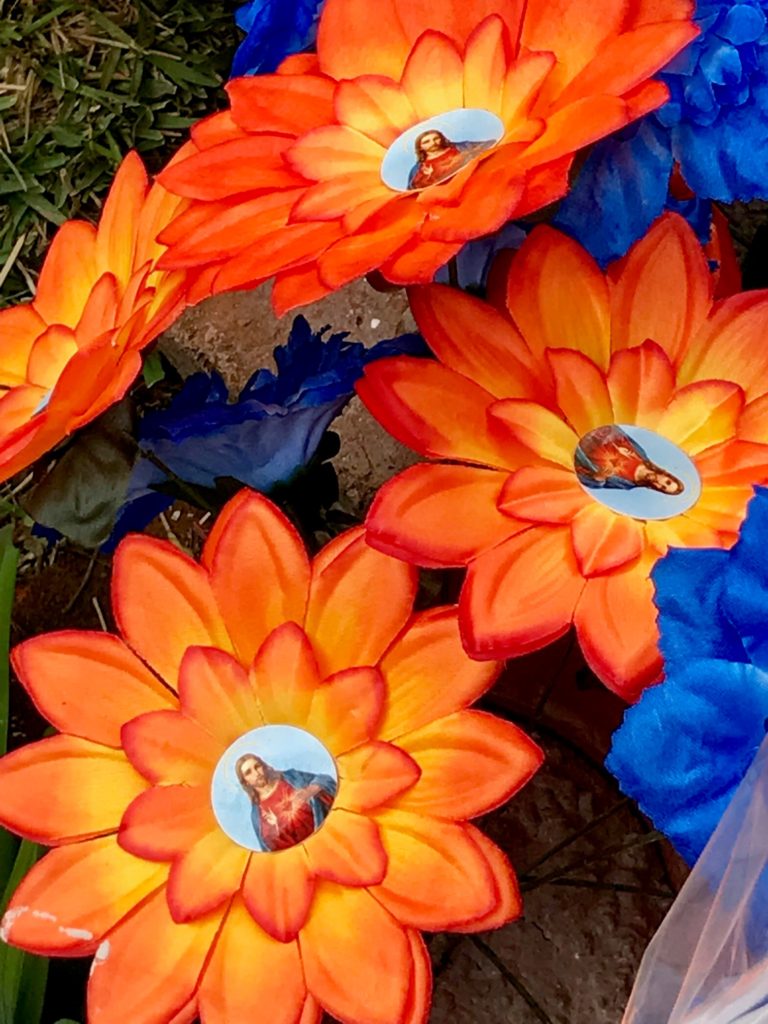



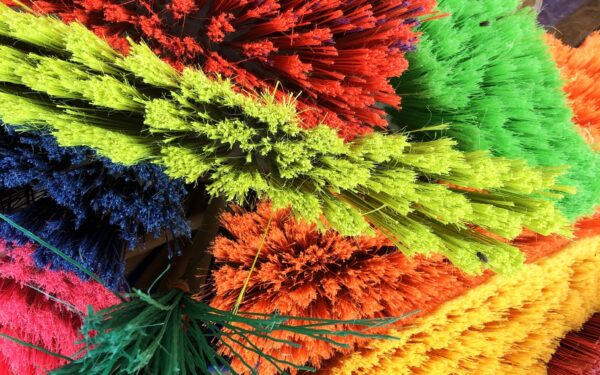

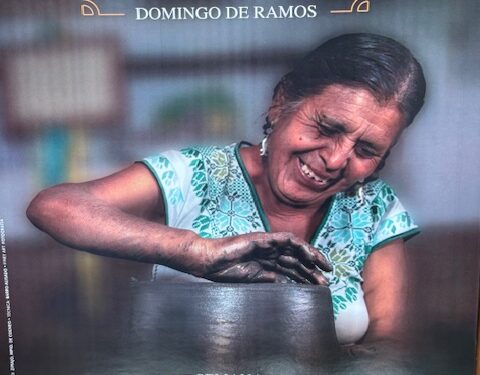

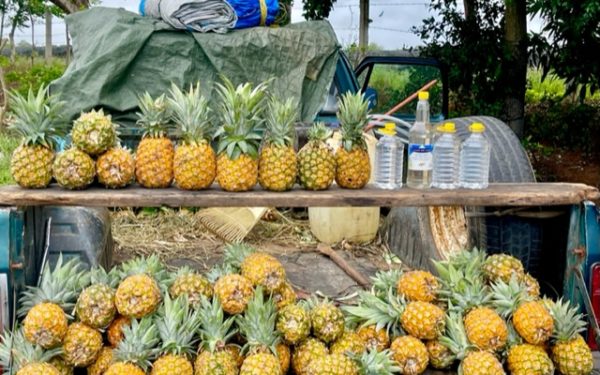
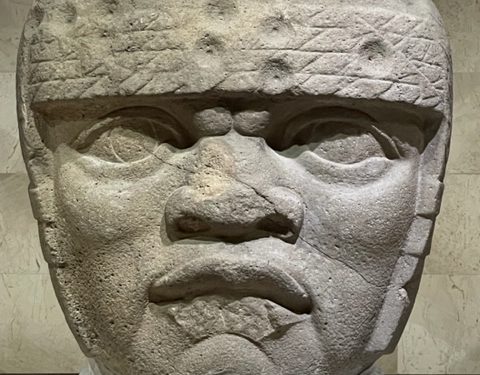
tHANKS